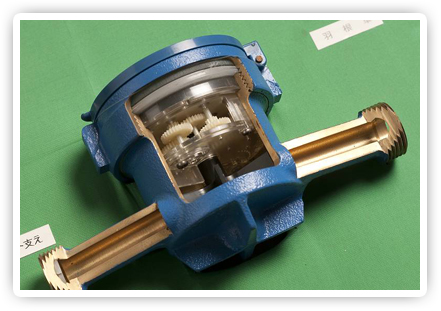Yokohama Waterworks Commemoration Hall / Various tangentiai-flow-impeller water meters3
Yokohama was the first city in Japan in which a modern waterworks system was constructed. The Yokohama Waterworks Commemoration Hall and Waterworks Technology Commemoration Hall displays materials and videos that present how Yokohama's waterworks system was developed. (For more information, see the February 2010 issue of the PR magazine pla-topia.) http://www.city.yokohama.lg.jp/suidou/kyoku/torikumi/suidou-pr/kinenkan/


In the late 1950s, manufacturers began to use plastic parts for water meters. Though modified and refined over the years, these meters basically consist of the parts as shown in the photo. Plastic parts were introduced for several reasons. They have excellent corrosion resistance, are less likely to fail, and significantly improve durability. Another principal reason is the reduced manufacturing costs of plastic parts, needless to say. Today, most parts, except for external cases (made of bronze in many cases), are made of plastic. The ratio of income from water consumption to the supplied water volume is called the "income recovery ratio." In the ideal case, 100% of supplied water would be metered. But this would require much more sensitive water meters.Metallic parts are heavy and do not help to raise the "income recovery ratio."
| Column | |||
 |
Types of water meters |  |
Plastic parts making up a tangential-flow-impeller water meter |
 |
Current tangential-flow-impeller type |  |
Auxiliary stop cock |



